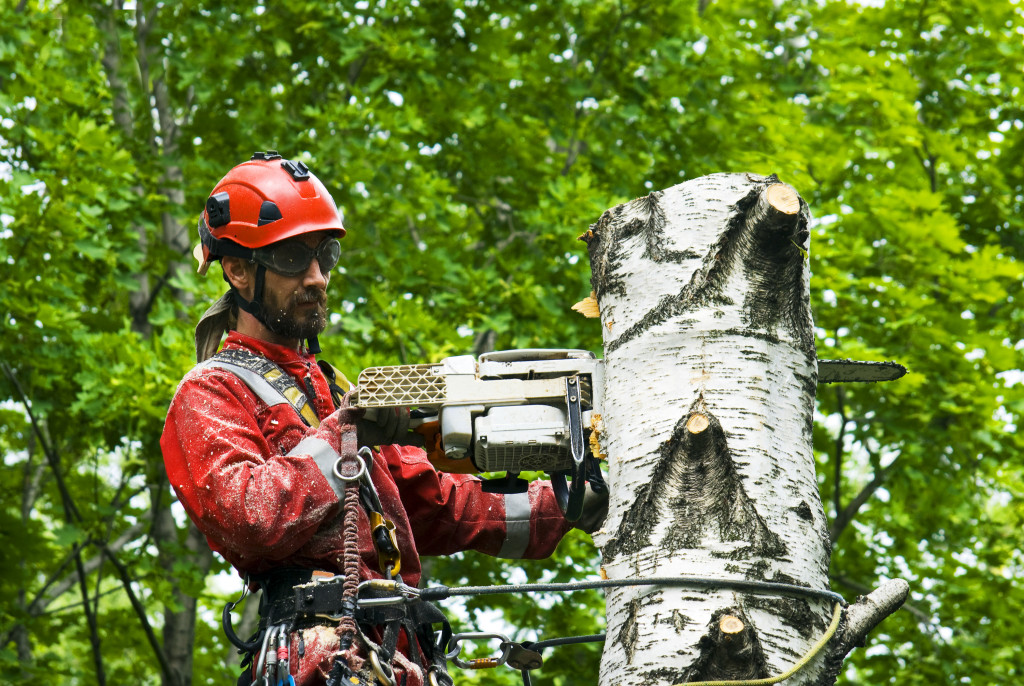- Gain certification from a recognized organization such as the International Society of Arboriculture.
- Get on-the-job training and volunteer for community programs to gain experience.
- Stay up to date with emerging trends by subscribing to magazines and attending local conferences.
- Demonstrate your knowledge through volunteering for community programs.
- Follow these steps to build a successful career in arboriculture.
The world is fast evolving, and with the constant increase in population, we may be witnessing a major shift in climate. As a result, the need for arborists has increased in recent times.
Arborists are individuals who are skilled in the handling and care of trees. The career path is ideal for individuals who enjoy working outdoors, have an eye for detail, and are looking for a rewarding and fulfilling career. This blog post will discuss how you can become a successful arborist.
What is an Arborist?
An arborist is a skilled professional who specializes in tree care, maintenance, and management. They are experts in understanding the biology and physiology of trees and use this knowledge to evaluate the health and safety of trees as well as diagnose and treat diseases and other issues.
Arborists work with various tree species, from small ornamental trees to large majestic oaks, and may work in various environments, including residential neighborhoods, commercial properties, and public parks.
The Importance of Arborists in Communities

Trees are an important part of any community, providing shade, improving air quality, and creating a pleasant aesthetic. This is why they need to be cared for and maintained properly.
By having an arborist in your community, you are ensuring the health and safety of trees. Arborists can assess tree health, diagnose diseases or pests, prune trees as needed, and advise on the best course of action for any issue. They also provide educational resources to help homeowners.
Tips for Becoming an Arborist
Becoming an arborist requires dedication, commitment, and mastery of certain skills. Here are some tips to help you become successful in this field:
Acquiring the Required Education
To become a successful arborist, acquiring the required education is significant. Enroll in an arborist school/college and obtain a degree in arboriculture. This will provide the foundational training and education needed to become a professional arborist.
You will learn about the science of trees, their morphology, the various diseases that affect them, and how to keep them healthy and strong. This will also include properly using protective gear, such as chainsaws and durable tree ropes.
Obtain the Necessary Certification
After acquiring the necessary knowledge, the next step is to gain certification. Certification is essential because it shows your clients you are knowledgeable and capable of providing professional and quality services.
The International Society of Arboriculture offers a certification process that is universally recognized. There are various levels of certification, so it’s essential to choose the level that suits your career path.
Gain Work Experience
The practical application of the knowledge you have gained goes a long way to building your reputation as a professional arborist. Get on-the-job training by working with an experienced arborist. You can also volunteer to support tree-planting programs in your local community.
This will not only provide you with practical experience but also provide a platform for you to expand your network. Experience is precious in the field of arboriculture, as you need to be knowledgeable and well-versed in the various techniques used to care for trees.
Invest in the Right Tools

Having the right tools is essential as it helps you to get the job done faster, better, and more efficiently. Arborists require different devices, such as hand saws, power saws, climbing ropes, safety goggles, and more.
But one of the most important tools you need to invest in is durable tree ropes. The use of tree ropes is essential in tree-care operations as they provide support to the arborist when climbing and pruning trees. They also help protect the tree from potential damage and make the job safer and easier for you.
Stay Informed and Engaged
As an arborist, staying informed and engaged with the latest trends in arboriculture helps to keep you at the top of your game. Subscribe to arboriculture magazines and attend local conferences to keep yourself up-to-date with emerging trends. Volunteer for community programs that promote tree care, as this helps expand your network and provides an opportunity to demonstrate your knowledge.
The Bottomline
In conclusion, becoming a successful arborist takes a lot of work and dedication, but the end results make it rewarding and fulfilling. Getting an education, gaining certification, gaining practical experience, investing in the right tools, and staying informed and engaged is important. By following these simple steps, you’ll be able to build a successful career in arboriculture.


